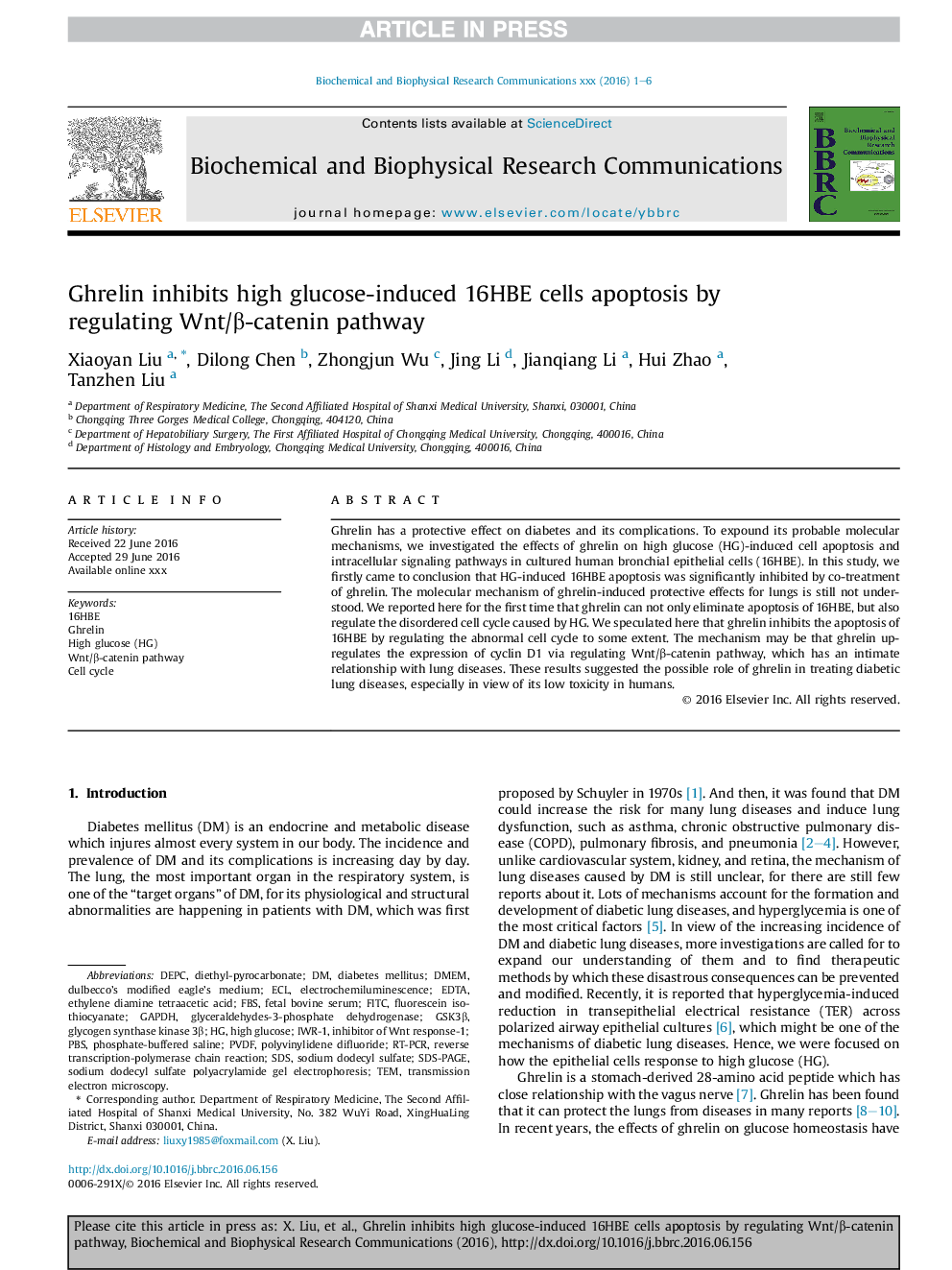| Article ID | Journal | Published Year | Pages | File Type |
|---|---|---|---|---|
| 10747974 | Biochemical and Biophysical Research Communications | 2016 | 6 Pages |
Abstract
Ghrelin has a protective effect on diabetes and its complications. To expound its probable molecular mechanisms, we investigated the effects of ghrelin on high glucose (HG)-induced cell apoptosis and intracellular signaling pathways in cultured human bronchial epithelial cells (16HBE). In this study, we firstly came to conclusion that HG-induced 16HBE apoptosis was significantly inhibited by co-treatment of ghrelin. The molecular mechanism of ghrelin-induced protective effects for lungs is still not understood. We reported here for the first time that ghrelin can not only eliminate apoptosis of 16HBE, but also regulate the disordered cell cycle caused by HG. We speculated here that ghrelin inhibits the apoptosis of 16HBE by regulating the abnormal cell cycle to some extent. The mechanism may be that ghrelin up-regulates the expression of cyclin D1 via regulating Wnt/β-catenin pathway, which has an intimate relationship with lung diseases. These results suggested the possible role of ghrelin in treating diabetic lung diseases, especially in view of its low toxicity in humans.
Keywords
GAPDHIWR-116HBEGSK3βDEPCECLRT-PCRPVDFFITCDMEMFBSSDSPBSWnt/β-catenin pathwayEDTAethylene diamine tetraacetic acidSDS-PAGESodium dodecyl sulfate polyacrylamide gel electrophoresisElectrochemiluminescenceTempolyvinylidene difluorideDiabetes mellitusdiethyl-pyrocarbonatesodium dodecyl sulfatefetal bovine serumfluorescein isothiocyanatePhosphate-buffered salineDulbecco’s modified eagle’s mediumTransmission electron microscopyreverse transcription-polymerase chain reactionCell cycleGhrelinhigh glucoseglyceraldehydes-3-phosphate dehydrogenaseGlycogen synthase kinase 3β
Related Topics
Life Sciences
Biochemistry, Genetics and Molecular Biology
Biochemistry
Authors
Xiaoyan Liu, Dilong Chen, Zhongjun Wu, Jing Li, Jianqiang Li, Hui Zhao, Tanzhen Liu,
